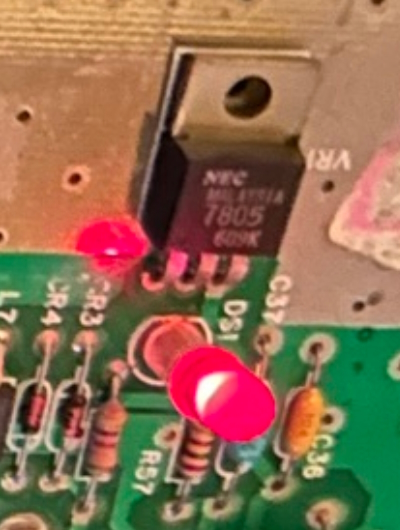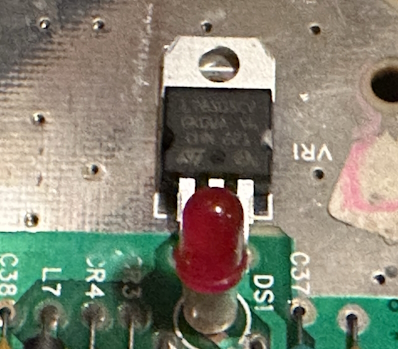Nicole's Atari 2600jr Feels the Heat
When I wrote a blog post on my Atari 2600jr, one mod I wanted to do was to replace the voltage regulator. Well, if you want to follow that saga, you’ve come to the right place. Let’s dig in.
The problem
The problem at hand is pretty simple. The Atari 2600jr has a 9V power input, but its electronics take 5V. To solve that, it uses an NEC 7805 linear voltage regulator.

The 9V input is unregulated, generally; drawing more power will cause the voltage to go down, which can lead to stability and other issues. Plus, it’s just way more than 5V and will fry all those beautiful chips. A linear voltage regulator like this burns that extra voltage internally. It always outputs 5V, and will draw heavier on the power supply to do it.
Unfortunately, nothing comes for free. The laws of physics state that if you go from 9V to 5V, that 4V has to go somewhere; in the case of the 7805, it becomes heat. And even worse, I removed the RF shielding when I modded my system, which it tried to use as a heatsink. (Though it was poorly done; there was no screw holding it in place, so the thermal losses aren’t bad)
For quantification, I decided to run Pitfall II for 5 minutes. My thinking was that since Pitfall II uses a special chip on the cartridge, it probably draws a little more. It’s also just my favorite 2600 game.

And running that long, and then using a cheap IR thermometer, I get… 153.6F (67.6C). Ouch!
Take one: Another linear regulator
One thing I thought was worth trying was an L78S05CV. This is still a linear regulator, but it has a higher max current of 2A, so I hoped maybe it had some better thermal management.
You might wonder why I’m doing a linear regulator again, when its heat losses are dictated by the laws of physics. That’s true, but laws of physics dictate a maximum; pretty much everything we build can only get close to the theoretical limit. And linear regulators have the advantage that the power they output is extremely clean.

This time it looks just a bit noisier, especially in the green– the Framemeister is sometimes iffy though, but another thought is that this might be running outside of its parameters. See, this voltage regulator is not supposed to get above 150F (65.5C), and when I measured it, 175.1F (79.5C).
So my theory that it might have better thermal management is disproven pretty thoroughly. Make sure you use heatsinks on your linear regulators, folks.
Take two: The Traco
I can’t find the photos I took of installing this one. The Traco TSR-1-2450 is a pretty common 5V regulator of the switching variety. Switching power supplies basically bypass the laws of physics I mentioned above by turning off and on really fast. A light-switch that’s off obviously draws zero power, and if you use a capacitor to average out the voltage on the output, you’ve dropped the voltage without having to pay the resistive price. Nice!
The downside is that high frequency turning on and off. That can result in noise in the output, and at the time I did this, I didn’t have an oscilloscope. So Pitfall II it was.

To my eyes, this looks just as clean as the original 7805, if not cleaner. (And my eyes are the ones that have to look at this console output) Definitely better than the poor overheating L78S05CV. But the proof is in the temperature, and that was… 80.0F (26.7C), barely above room temperature. Excellent!

